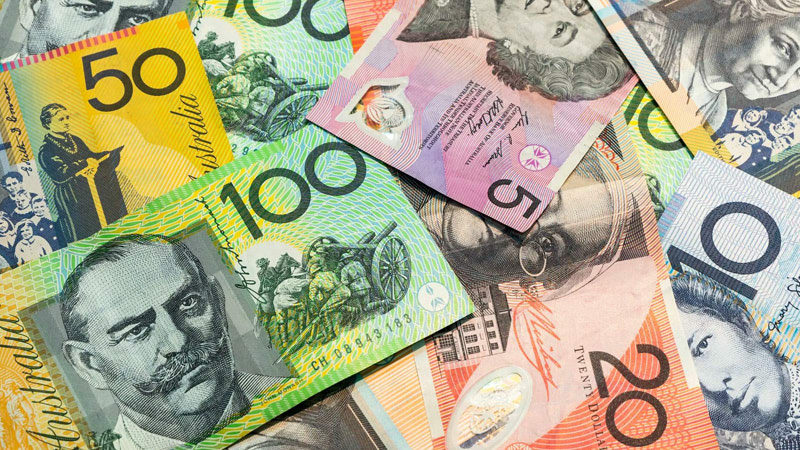
Key takeaways
While a lot of investors are looking for cash flow, they should really be aiming at growth.
Cash flow keeps you in the game, growth gets you out of the rat race.
A particular property is neither cash flow positive or cash flow negative - it all has to do with how you finance your investment.
Investors are looking for cash flow to give them choices, but in general they need to build an asset base first and then buy cash flow - this must be done in the right order
If you’re thinking you can invest in cash flow to grow your wealth, I have news for you.
While it never has been the case, especially in the current investment environment in 2025 , chasing cash flow might not be the most financially rewarding decision.
Here’s why – and what you should do instead.

What are high cash flow properties?
First, you may be wondering what it means to invest in cash-flow properties.
In terms of property investing, you can either invest for cash flow or capital growth.

Note: The choice is entirely yours, depending on your strategy, but there are many factors to take into account.
Put simply, when you invest for cash flow, you receive regular cash income from that investment that is in excess of the cost of owning it.
Cash flow investments are properties with a higher rental yield and a resulting rental income that add up to more than the expenses generated in keeping the asset (such as maintenance, repairs, property management fees, and so on).
For instance: if the property costs you $500 per week in mortgage interest, council rates, and management fees, but it earns $600 per week rent, then you’re receiving a positive cash flow of $100 per week.
However, cash flow investments almost always comes as a trade-off of lower capital growth.
Doesn't that sound like a great way to invest?
Sure, it does – in theory.
In reality, however, investing for cash flow comes with some definite downsides - particularly lower capital growth.
I've found many investors are looking for cash flow to give them choices, but in general they need to build an asset base first and then "buy" cash flow - this must be done in the right order.
In my mind, residential real estate is a high growth, relatively low yield investment.
Those investors looking for cash flow are, in general, thinking about the here and now rather than the long-term benefit of owning quality high growth properties.
While a small amount of positive, cash flow may solve their short-term problems, it won't give them the long-term results results they're hoping for.
But it is important to keep in mind a few other factors, including tax: given that these investments generate income, you will need to pay tax on that income.
This aspect alone can make it quite difficult to build a substantial amount of wealth based on cash flow investing, especially if you’re a high-income earner.
Another potential downside to cash flow investing is the location and market issues that can impact your property.
Cash flow-positive properties tend to be in a secondary or regional location and, in general, they can be more heavily affected by market fluctuations and economic cycles than more solid, capital city locations.
These locations also have less market depth from affluent owner-occupiers and less scarcity so values increase much more slowly than well-located capital city properties.
By the way...
- Any particular property is neither a positively nor negatively geared investment.
It really depends on how much debt you have against that property.
Even an investment property with a very low rental yield will be positively geared (bringing more cash flow than goes out) if you have little or no debt against it. - Negative gearing is not a property investment strategy
Now I know this will confuse some people, but your cash flow position after taking into account your investment property rental income and your expenses is really a finance strategy or a statement of your finance and leverage.
Negative gearing on its own is not an investment strategy.

So – how can you invest smarter in 2025?

Tip: Instead of investing solely for cash flow, invest with capital growth at the top of your wish list.
To do this…
1. Review your budget
Do you need a high cash flow property in order to invest?
Or do you have more than enough disposable income to sustain a negatively geared, high-growth investment property?
2. Set some goals
Why do you want to invest in the first place: to own several properties outright, so you can live off the rental income in retirement?
To make a profit and then plow those proceeds into your own home mortgage?
3. Devise a strategy
Once you know your goals, you can come up with a clear-cut strategy to help you work towards them.
Explore all the options, taking into consideration your own personal circumstances – and when in doubt, seek some professional advice.
All of the above information is designed to educate and doesn’t mean you can’t or shouldn’t invest in cash flow in 2025.
Just be sure to do your research and due diligence, to ensure that the property you buy is going to help you reach your property and wealth creation goals.

Note: Сash flow keeps you in the game, and capital growth gets you out of the rat race.
NOW READ: Negative gearing vs positive gearing – which makes for better property investing?














